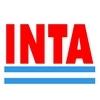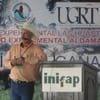Explore all the information on
Dairy cattle health
Welcome to the page about Dairy cattle health of Engormix; a source of knowledge on Dairy cattle health.
Erin Horst (Iowa State University) discussed leaky gut in lactating Holstein cows and the consequences of feed restriction, as well as the effect of dietary zinc hydroxychloride, during the 8th Symposium on Gut Health in Production of Food Animals in St. Louis, USA....
Comments : 1
Recommendations: 7
...
Comments : 3
Recommendations: 0
The GIT, or rather the gastrointestinal tract, is the organ of the all organism mostly colonized by the microbial population: it hosts more than 70% of all the microbes of the animal body and forms the gastrointestinal microbiome, consisting of bacteria, yeasts, fungi and viruses. The viruses present,...
Comments : 0
Recommendations: 1


Different encapsulation techniques lead to varying levels of nutrient bioavailability
Suggested link
A cross sectional study was undertaken to determine the prevalence and intensity of parasitic infections in dairy cattle in the high tropics of Colombia. A total of 1003 rectal samples were collected from dairy cows at 29 farms between May and June 2014 to represent the number of farms, age groups, and size of the 65,000-cow population in the municipality of San Pedro de los Milagros. Coprological techniques were used to detect gastrointestinal nematodes, liver flukes, coccidian oocysts, and...
Comments : 2
Recommendations: 1
Introduction The southern cattle tick Rhipicephalus ( Boophilus ) microplus (Acari: Ixodidae) is a persistent vector for infective tick-borne diseases in cattle such as babesiosis and anaplasmosis (Cossio-Bayugar, Miranda, and Holman 2005). The endemic nature of this bovine blood-sucking ectoparasite is considered an obstacle for development of the cattle industry in tropical and subtropical cattle grazing areas world-wide (Nu ez, Mu oz-Cobe as,...
Comments : 1
Recommendations: 0
Introduction From the centuries, herbal medicines are used to treat various diseases and now they had become an entity of global importance, with both medicinal and economic implications (Yadav et al, 2012). People's perception towards herbal medicine has also changed and is very encouraging (Dorai, 2012). Wound is defined simply as the disruption of the cellular and anatomic continuity of a tissue (Bennet,...
Comments : 1
Recommendations: 0
...
Comments : 2
Recommendations: 5
Background Mycobacterium avium subsp. paratuberculosis (MAP) is a slow-growing bacterium that causes Johne’s disease, a wasting disease in ruminants and other animals. A common test for Johne’s disease is the serum antibody ELISA test which monitors the humoral immune response of the animal following MAP exposure. However there are well known limitations of this test, for example the sensitivity can be...
Comments : 1
Recommendations: 2
Dear All Hi Kindly share your suggestion that suggested FMD vaccination schedule for dairy animals is two times in a year.but many time observed that animal get clinically affected even after FMD vaccination although after taking all care regarding dosing and cold chain as well.now the question arises that can we suggest to apply vaccine thrise a year or required booster vaccination for the same, where as FMD vaccine provides immunity upto 6 month. Waiting your...
Comments : 3
Recommendations: 0


Different encapsulation techniques lead to varying levels of nutrient bioavailability
Suggested link
INTRODUCTION Adequate rest has been positively associated with productivity, health, and welfare of dairy cattle. When access to stalls is restricted, cows prioritize lying down over feeding (Munksgaard et al., 2005), and preventing cows from lying down induces stress (Cooper et al., 2008). As a consequence, measures of lying behavior, such as the daily duration and the frequency and duration of lying bouts, is a measure of cow comfort (Haley et al., 2001; Rushen et al.,...
Comments : 0
Recommendations: 0
...
Comments : 0
Recommendations: 1
Cold weather is not just hard on the people taking care of animals, it can be tough on the animals themselves. Consider respiratory disease (pneumonia) in dairy calves. It’s not just our imagination that cold temperatures often bring with them...
Comments : 0
Recommendations: 3
Dr. Scott McDougall explains how the smartphone app "Bovine Mastitis Cure Calculator" allows herd owners and veterinarians to estimate the cure rate of clinical mastitis cases....
Comments : 1
Recommendations: 3
Dr. Jon Huxley (University of Nottingham) talked about claw horn lesions, causes, and findings in recent researches, during the International Conference Lameness in Ruminants 2015 in Valdivia, Chile....
Comments : 1
Recommendations: 0
Introduction The transcriptome is the momentary sum of all DNA transcribed in a cell. Classically, the transcriptome included the measurement of each of the ribosomal RNA, messenger RNA (mRNA), and transfer RNA. These include a relatively small portion of the whole genome.1 The rest of the DNA was considered, until recently, not to be transcribed.1 The accumulation of data in the last decade or so has provided vast...
Comments : 0
Recommendations: 0


Different encapsulation techniques lead to varying levels of nutrient bioavailability
Suggested link
Background Water is the most important nutrient for calves and plays an important role as solvent of nutrients, rumen development, thermoregulation and other functions in the body. In addition other researchers found that calves started feed consumption earlier and consumed more when unlimited access to clean drinking water is available. Generally, water comprises 70 to 75% of the weight of the calf, and they require greater...
Comments : 1
Recommendations: 2
Escherichia coli bacteria are a major cause of clinical coliform mastitis in dairy cattle. Uncontrolled bacterial replication caused by dysfunctional immune responses results in severe mammary tissue damage and death. Excessive production of reactive metabolites (RM) by phagocytic cells results in oxidative mammary tissue damage observed during coliform mastitis. Increased metabolism of polyunsaturated fatty acids (PUFA) such as arachidonic acid (AA) generates...
Comments : 1
Recommendations: 0
1. Introduction Endoparasitic nematodiasis are considered as one of the main factors seriously affecting the livestock industry, since they cause an important reduction not only in the animal weight but also their main products; that is, meat and milk are also diminished [1]. Other problems derived from nematode parasitic infections are the continuous expenses in chemical treatments and eventually the death of young...
Comments : 0
Recommendations: 0
The Dairy Focus Team at the University of Illinois at Urbana-Champaign has developed the Dairy Focus Somatic Cell Count Calculator, which allows producers to analyze their test day milk numbers and take appropriate action regarding somatic cell count. The main goal of the Dairy Focus Somatic Cell Count Calculator is to assist dairy producers in making management decisions on an individual herd level, which will improve overall health and decrease economic losses due to mastitis. Making these...
Comments : 1
Recommendations: 0











.jpg&w=3840&q=75)















